
Nishina Shinmeigu Shrine, a National Treasure
The Shrine is one of only five architecture in Nagano Prefecture to be designated a national treasure. The main hall, inner gate, and connecting area were built in the 17th century and is Japan’s oldest “shinmei” architectural style building. The wooden munafuda plaques remain from the 14th century.
Traditional events have continued to be held from the early times including autumn and spring farming festivals.

Nishina Shinmeigu Shrine’s Wooden Plaques, an Important Cultural Property
Once every twenty years, munafuda, a wooden plaque has been added in the ritual of rebuilding the shrine. Altogether there are now 33 sheets with the first being added 620 years ago in 1376.
On the plaques, the people concerned with rebuilding are listed, including the successive Nishina lords as well as feudal lords of the Matsumoto clan after annihilation of the Nishina family.

Nishina Shinmeigu Shrine Prayer Service for a Good Crop & Kagura Play
A fortune telling of the year’s crop was carried out in the 16th century. If you look at the records, you will find the order of cultivation at that time. Kagura plays consist of two different styles; one is with dancing with a mask and costumes, flute playing, and taiko drumming, and the other is a Noh-style play with script, both of which are simple but sacred and elegant, characterizing a rare event in Japan.
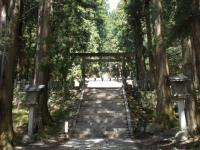
Nishina Shimeigu Shrine Forest
Mainly cedar and cypress trees with many over 700 years old. Other trees include red pine, chestnut, oak, hemlock, and fir. Under the large trees, many lush plants can be seen. Because of this natural environment, the area is protected as a natural monument of Nagano Prefecture.
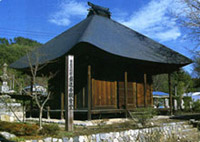
Jorenji Temple’s Kannondo Hall, an Important Cultural Property
Jorenji’s Kannondo Hall is one of the oldest temple architectures in the Matsumoto area. The Buddhist image of Nyoirin Kannon (the Bodhisattva of Compassion) is from the 12th century. Other cultural holdings include Fudo-Myoo (Acala) image from the 13th century and Yakushi Nyorai (Bhaisajyaguru) image from around the 15th century.
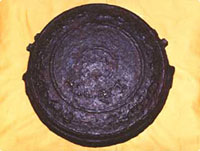
Waniguchi Iron Gong, an Important Cultural Property
The entrance to the temple had a small flat gong held with cloth straps for prayer, called waniguchi. The unearthened gong has an inscription of production in 1228 and is said to be Japan’s oldest iron gong. It is currently stored in the Mountain Museum.
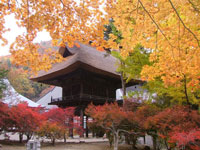
Reishoji Temple
Located deep in the mountains, this temple was built over 600 years ago. During the autumn, the beautiful fall foliage at the front of the temple are stunning, especially of a rare Ohatsuki ginkgo tree bearing its nuts on the leaves. The splendid two-storied temple gate structure is decorated with many carvings.
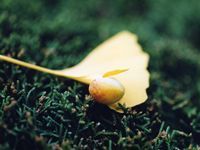
Ohatsuki Ginkgo Tree
Reishoji Temple’s Ohatsuki (attached to leaves) ginkgo tree is thought to be a rare evolutionary throwback possibly due to harsh climate conditions, and bears its nuts on its leaves. Reaching 17 m in height and with a circumference of 185 cm, this 70- to 80-year-old female tree has been designated a natural monument of Omachi.
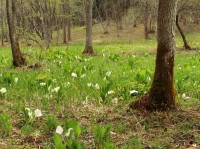
Iyari Wetlands
Being one of Nagano Prefecture’s Natural Monuments, the wetlands cover a width of 130 m and a length of about 500 m. You can walk around the edge in about one hour while gazing at the variety of seasonal flowers which appear after the winter snow melts. In autumn, a must see is the beautiful fall foliage.
There are numerous of wildlife including the forest green tree frogs that lay their eggs on the branches of the trees, as well as Japan’s smallest dragonfly, the scarlet dwarf.
Near the water spring on the east side boardwalk, you can find rectangular ditches of water made during the war when peat from the swamp was excavated in 32 different places in about 2208.67 square meters.
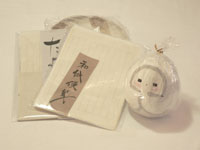
Matsusaki Japanese Paper
Paper making in Omachi began over 1,000 years ago, originally used for paper talismans issued by Nishina Shinmeigu Shrine. You can try a Japanese paper making experience.

